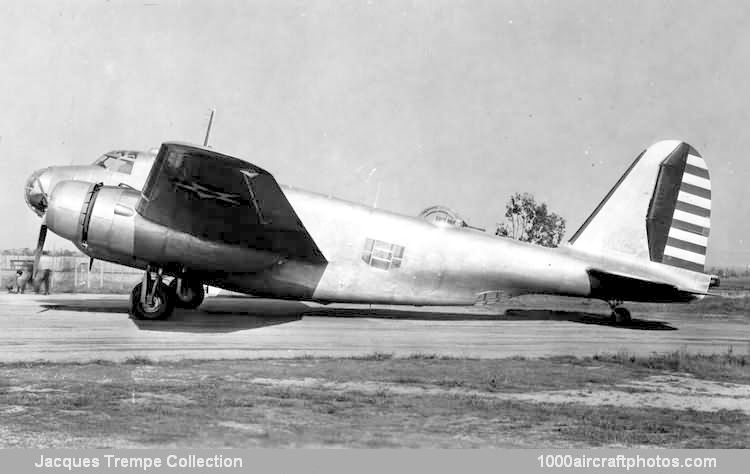The NA-21 (sometimes referred to as Dragon) was an attempt to improve on the B-18's performance whilst using the same formula, and it was powered by two 1,200 hp Pratt & Whitney R-2180-1 Twin Hornet radial engines, fitted with F-10 turbo-superchargers.
With a crew of six, the all-metal NA-21 was relatively heavily armed, with single 0.30 in (7.62 mm) machine guns in each of five positions including a ball-type turret in the nose, a dorsal turret, two waist positions and a ventral position. A maximum bomb-load of 10,000 lb (4,536 kg) could be carried over 600 mi (966 km), or 2,200 lb (998 kg) for 1,960 mls (3,058 km).
After some changes, including a reduction in rudder area (administrated under the production number NA-39), the NA-21 was accepted for testing at Wright Field as the XB-21, but a planned order for five YB-21s was not confirmed and the XB-21 ended its life, with the nose and dorsal turrets removed, as a hack at Wright Field."
Span: 95 ft 0 in (28.96 m)
Length: 61 ft 9 in (18.82 m)
Height: 14 ft 9 in (4.50 m)
Wing area: 1,120 sq ft (104 sq.m)
Weight empty: 19,082 lb (8,655 kg)
Max take off weight: 40,000 lb (18,144 kg)
Max speed: 220 mph (354 kmh) at 10,000 feet (3,048 m)
Cruise speed: 190 mph (306 kmh)
Landing speed: 37 mph (60 kmh)
Climb: to 10,000 feet (3,048 m) 10 min
Service ceiling: 25,000 ft (7,620 m)
